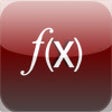Used L.E.D. Lab for iOS? Share your experience and help other users.
Developer’s Description
Used L.E.D. Lab for iOS? Share your experience and help other users.
Explore More

Aviation Week MRO Events
Free
PostInKhmer
Free
Essentialist - Checklist, To-do List and Reminder for work, home and school essentials
FreeVatMap
Free
Conversion
Free
Infinite List - The Advanced Tasks, To-do & Checklist
PaidContact Clean App
Paid
Formula Cruncher
Free
EZCheque2
Freei41CX -- RPN Calculator
Paid
Infocaja
FreeStill Screen Pro - Disable Touch Screen
Paid